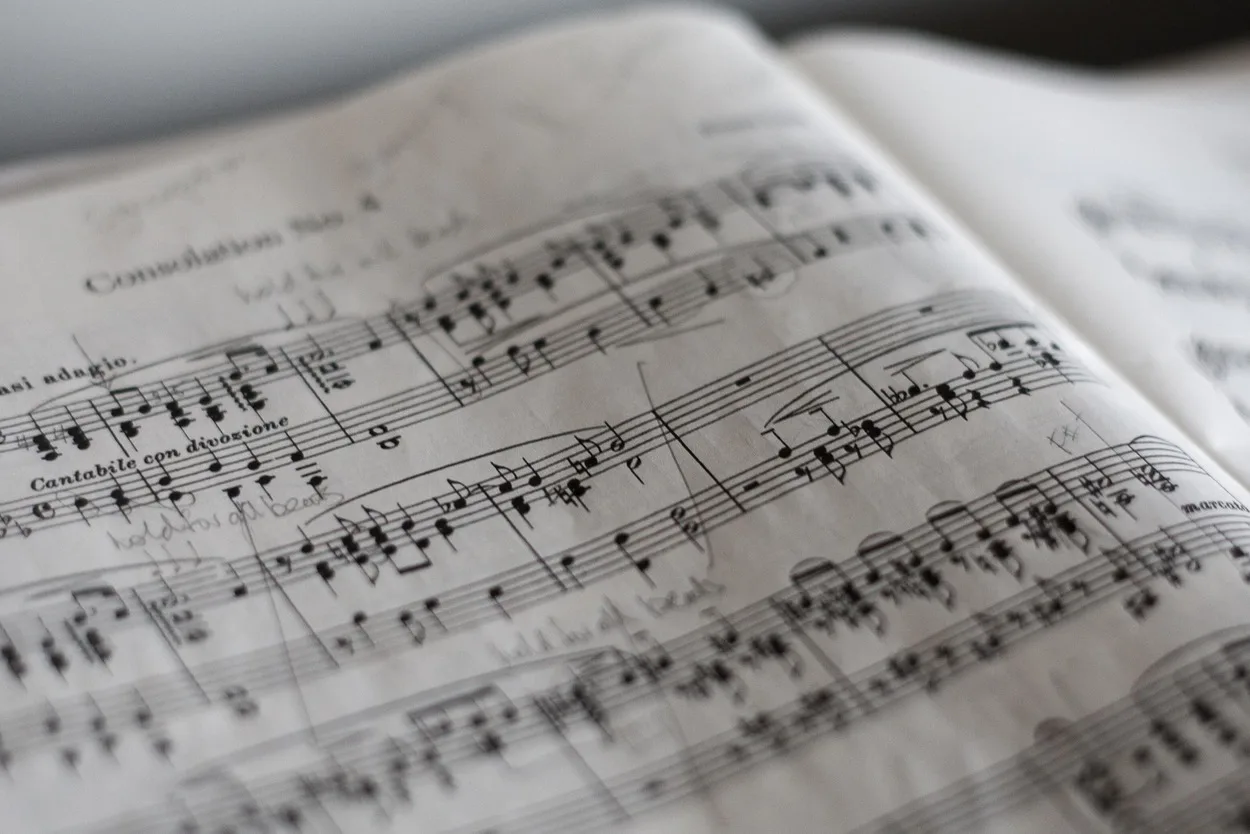Music has the power to move us, lift our moods, and even transport us to different worlds of music. But what is it about music that captivates us? The answer lies in its components: melody and harmony.
While both are essential aspects of a song, they have distinct differences. In order to truly appreciate the emotion behind any piece of music, it’s important to understand how melody and harmony function together.
Melody refers to the sequence of pitches heard, while harmony involves playing multiple notes at once.
In this blog post, we’ll look at the differences between melody and harmony and explore how they impact our emotions. Let’s dive into it…
What Is The Melody?
Melody is the succession of notes in musical compositions, giving a distinct and recognizable sound. It can contain both high and low pitches and is often singable.
Rhythm is the duration for which each note is played, providing an underlying pulse or beat that propels a melody forward.
What Is Harmony?
Harmony combines two or more notes simultaneously, creating a relationship between them that is either consonant or dissonant.

Melody adds emotion and feeling to the music, creating a structure for the piece which can be built upon. Harmony adds depth and texture as well as provides balance to the composition.
It can also contrast melody sections by providing an alternate soundscape, creating an interesting interplay between the two elements. Both melody and harmony work together to shape the overall sound of a piece, giving it a unique character and identity.
Harmony vs. Melody – Comparison
| Harmony | Melody |
| Several notes played simultaneously | A succession of single tones in musical compositions |
| Can be classified into consonance and dissonance | Played by lead instruments such as voice or wind instruments |
| Creates a chord or something like a background | Establishes the main musical phrase or idea |
| Adds richness to the music | Has nothing to do with pitch (highness/lowness of note) |
| Connects different aspects of music together | Has everything to do with beats and combinations of lengths of notes |
| Affects the emotional impact of a piece | Can be created with just one instrument or more |
| Is influenced by rhythm and texture | Establishes a sense of structure in music |
| Complexity can vary widely | Develops over time through repetition and variations in pitch, rhythm, or dynamics |
What Is A Chord?
A chord is an essential element of any music. It combines three or more notes played simultaneously, creating a structural harmony within the piece.
Chords come in various types, such as major, minor, and seventh chords, all with their distinct sounds, from happy and relaxing to evil and dissonant.
Knowing how to play chords is crucial if you want to write music, as this will allow you to express yourself in a way that single notes won’t.
When looking at chord symbols on a lead sheet, for example, “Cmaj7“, they can be interpreted formally or informally. With the formal interpretation being all of the notes within the specific chord’s interval and the informal interpretation being the notes you actually play, whether simultaneously or arpeggiated.
How Does Music Affect Your Emotions?
As you probably know, music has a powerful ability to evoke emotion. It can engender feelings of joy, sorrow, excitement, relaxation, and more.

Research has shown that music can positively affect emotions by increasing positive arousal while decreasing negative arousal.
For example, studies have found that listening to happy or upbeat music can reduce stress and increase happiness levels.
Additionally, the effect of music on emotions can be seen in how it has been used therapeutically to alleviate symptoms of depression, anxiety, and even post-traumatic stress disorder (PTSD).
Music also strengthens the connection between people by providing a shared emotional experience. This is due to the fact that when we hear music, our brains form neural pathways that evoke empathy and understanding of others’ emotions.
By creating strong emotional connections, music can evoke powerful feelings that often last beyond the end of a song.
In summary, music is a powerful tool for affecting our emotions on both an individual and collective level. Thus, it is important to take advantage of the effect that music has on emotions to improve our overall well-being.
What Is A Melody Without Harmony?
Melody without harmony is known as monophonic music and is a succession of pitches sounding one at a time.
Harmony, on the other hand, can exist without melody; it is an accompaniment played by itself.
However, a true melody contains more than just notes alone and must include intentionality and beauty to be considered as such.
In terms of musicality, chords provide additional partials that interact with the melody notes to create a unique timbre and additional temporal ties, which can add to the smoothness of a melody.
Ultimately, harmony is necessary for creating harmonized melodies and serves as a tool to increase the variety of melodies and provide greater sonic depth. Without both melody and harmony, music would be incomplete.
Is It Possible To Learn Music Theory Without School?
The study of music theory focuses on how music and sound work. It covers a range of topics, such as chord structure, scales, intervals, and melody.
Learning music theory without school can be daunting, but it is possible with the right resources and dedication to practice.

Here are some of the best ways to learn music theory without school:
- Invest in an experienced teacher – Finding an instructor who is knowledgeable about music theory and can explain it in easy-to-understand terms is the first step to furthering your knowledge.
- Read and take notes – Reading books and taking notes on what you’ve learned is a great way to educate yourself on music theory.
- Make it personal – To truly learn music theory, it must be personalized. As soon as you learn about a technique, start composing with it to ingrain it within yourself.
- Start from the basics – Begin by mastering the basics of music theory, like scales, chords, and intervals.
- Get hands-on experience – Practicing what you’ve learned is essential for grasping music theory concepts.
Conclusion
- Melody and harmony are two essential elements of music that combine to create a unique and powerful sound.
- Melody is the sequence of pitches heard in a song, while harmony involves playing multiple notes at once.
- Melody adds emotion and feeling to composition, whereas harmony provides depth, texture, balance, and contrast.

